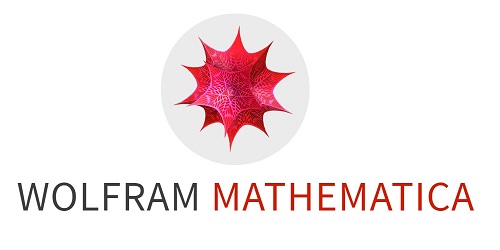This site is best used from a desktop PC, however it can also be used by mobile devices, in which case it may be useful to rotate the device 90° degrees.


My Quantum Mechanics Home
|
This website supplements the book
"Un'introduzione elementare alla meccanica quantistica"
by Giovanni Mastrogiovanni.
It is possible to contact the author using the mailbox giovanni.mastrogiovanni@gmail.com.
On this site we study some introductory problems.
Calculations, images and animations have been carried out
with Wolfram Mathematica.
For each case study, a Wolfram Mathematica notebook is provided that allows the reader to reuse the solutions,
perform the calculations and produce his own graphs using Wolfram Cloud (free of charge). This site is best used from a desktop PC, however it can also be used by mobile devices, in which case it may be useful to rotate the device 90° degrees. |
||

|
Introduction to Wolfram Mathematica | Wolfram Mathematica and its online version Wolfram Cloud are a symbolic and numerical computing environment. In this course we have used them to study quantum mechanical problems. The notebooks can be opened, executed and modified with Wolfram Cloud (it's free) using only the internet browser (eg Chrome) but the best use is to download the notebook and use it via Wolfram Mathematica (it is paid). |
| Moving particle video | We study the motion of a particle passing through a set of constant potential zones. The initial state is a Gaussian wave packet. The energy of the particle is between the minimum value and the maximum value . Particle that bounces, particle that increases or decreases the speed, tunnel effect, potential well, etc. | |
|
|
Hydrogen atom orbitals | (Analytical Solutions). Particle subject to a central force, as in the case of the hydrogen atom in which the electron is attracted to the proton. In this section we show the orbitals for the different values of the three quantum numbers n, l, m. |
|
|
Box | (Analytical Solutions). Particle confined to an interval (one-dimensional box) of the X-axis. The Schrödinger equation can be solved analytically without taking approximations. |
|
|
Harmonic Oscillator | (Analytical Solutions). A harmonic oscillator is a system that, when displaced from its equilibrium position, experiences a restoring force F proportional to the displacement x, that is: , where k is a positive constant (elastic constant). The potential energy is given by the relation where . The Schrödinger equation can be solved analytically without taking approximations. |
|
|
Square Well | (Near Analytical Solutions). The potential is always zero except inside the square well where it assumes the constant negative value. We find the solutions with negative energy therefore inside the well. With negative energy values it is not possible to analytically solve the Schrödinger equation, or rather, it is possible to find the analytical solution but this depends on the energy parameter which can only be found numerically (after setting the value of all constants). |

|
Request the notebook for free | All of the following cases have been resolved with this notebook. Given any bound state potential V(x), the Mathematica notebook allows to numerically solve the Schrödinger equation, finding the energies (eigenvalues) and the relative functions (eigenfunctions). Request the notebook for free to giovanni.mastrogiovanni@gmail.com |
|
|
Anharmonic Oscillator | A anharmonic oscillator is characterized by potential where is a positive constant. With the potential of the harmonic oscillator is obtained. |
|
|
Square Wells: Sigle, Double, Triple | Single, double and triple square well. The potential is always zero except inside the wells where it assumes the constant negative value. We find the solutions with negative energy therefore inside the wells. With negative energy values it is not possible to analytically solve the Schrödinger equation, analogously to the previous case of the single square well. |
|
|
Double Oscillator | A double oscillator is characterized by potential . With the potential of the harmonic oscillator is obtained. |
|
|
Double Well | The so-called double-well potential is one of a number of quartic potentials of considerable interest in quantum mechanics, in quantum field theory and elsewhere for the exploration of various physical phenomena or mathematical properties since it permits in many cases explicit calculation without over-simplification. |
|
|
Kratzer potential | The Kratzer potential was originally intended to approximate the interatomic interaction in diatomic molecules. This potential belongs to the small number of problems for which the Schrödinger equation is exactly solvable. |